Guest Opinion: All the king’s horses can’t make wildfires go away
Published in the Medford Mail Tribune on December 31, 2017
By Dominic DiPaolo, Dominick A. DellaSala and Dennis Odion
State Sen. Alan DeBoer recently convened town hall meetings in Medford and Ashland on last summer’s wildfires and actions under consideration at the state Legislature. What we hoped would be an informed discussion became a venue for DeBoer to promote unfounded theories, point fingers and dismiss real dialogue. As ecologists who have studied forest ecosystems for decades, we realize that wildfire is alarming, smoke unhealthy, and everyone is looking for solutions. However, we take issue with DeBoer’s unhelpful ideas and offer caution about using forest thinning as a panacea to all issues surrounding wildfires.
DeBoer started both meetings by giving the floor to William Simpson, who proposes introducing feral horses to control flammable vegetation in the Siskiyou Mountains. In doing so, DeBoer privileged a position that is not only unscientific and unworkable, but already proven ineffective. In the 1910s, the Forest Service studied livestock use of shrub-dominated areas in the Siskiyous and found that livestock were unsuccessful at converting large swaths of shrubs to grass. Simpson’s proposal is unlikely to pass the federal permitting process and valuable time should not be wasted on it. Yet, Congressman Greg Walden and Curry County Commissioner Court Boice have endorsed it.
Guest Opinion: All the king’s horses can’t make wildfires go away
Published in the Medford Mail Tribune on December 31, 2017
By Dominic DiPaolo, Dominick A. DellaSala and Dennis Odion
State Sen. Alan DeBoer recently convened town hall meetings in Medford and Ashland on last summer’s wildfires and actions under consideration at the state Legislature. What we hoped would be an informed discussion became a venue for DeBoer to promote unfounded theories, point fingers and dismiss real dialogue. As ecologists who have studied forest ecosystems for decades, we realize that wildfire is alarming, smoke unhealthy, and everyone is looking for solutions. However, we take issue with DeBoer’s unhelpful ideas and offer caution about using forest thinning as a panacea to all issues surrounding wildfires.
DeBoer started both meetings by giving the floor to William Simpson, who proposes introducing feral horses to control flammable vegetation in the Siskiyou Mountains. In doing so, DeBoer privileged a position that is not only unscientific and unworkable, but already proven ineffective. In the 1910s, the Forest Service studied livestock use of shrub-dominated areas in the Siskiyous and found that livestock were unsuccessful at converting large swaths of shrubs to grass. Simpson’s proposal is unlikely to pass the federal permitting process and valuable time should not be wasted on it. Yet, Congressman Greg Walden and Curry County Commissioner Court Boice have endorsed it.
The thinning debate: Does logging help or hurt fire mitigation?
Politicians say thinning forests will help prevent ‘catastrophic’ fires. But ecologists say this season wasn’t the worst, and logging won’t stop it from happening again.
According to peer-reviewed studies on the overall likelihood of a thinned area of forest being hit with fire and on historical fire trends, the argument that thinning is the best way to address future fire seasons like the one we just had is profoundly flawed.
For one, proposals to remove trees, or “fuels,” are based on the idea that fires burn more intensely in unlogged forests, making them more severe and quicker to spread.
But a recently published examination of the intensity of 1,500 forest fires over the past 40 years in 11 Western states found the opposite. Its authors, scientists at the Project Earth Institute, Geos Institute and Earth Island Institute, found fires burned most intensely in previously logged areas. In contrast, in wilderness, parks and roadless ares, the fires burned in mosaic patterns – which maintain healthy, resilient forests.
Both sides of the thinning debate frequently point to one-off incidents to show how thinning either is or is not effective.
“You have to be careful about anecdotal information,” warned Dominick DellaSala, a renowned fire ecologist and chief scientist at the Geos Institute. “Wind speed can change, humidity levels can change, and if you don’t account for all those factors, you could conclude either way. Either the thinning helped, or the thinning didn’t help, depending on what was going on with the fire climate.”
Read the full article at streetrootsnews.org
After the Smoke Clears – PDX Fire Forum

Geos Institute Chief Scientist speaks to packed house in Portland’s Revolution Hall on the ecology of wildfires and attempts by the Trump administration and congressional allies to radically increase logging on public lands.
- Download his presentation “If a tree burns in a forest, does anybody hear?“
- Read the letter urging opposition to Rep. Walden’s post-fire logging bill, delivered the House Natural Resources Committee staff on December 11, 2017
After the Smoke Clears – PDX Fire Forum

Geos Institute Chief Scientist speaks to packed house in Portland’s Revolution Hall on the ecology of wildfires and attempts by the Trump administration and congressional allies to radically increase logging on public lands.
- Download his presentation “If a tree burns in a forest, does anybody hear?“
- Read the letter urging opposition to Rep. Walden’s post-fire logging bill, delivered the House Natural Resources Committee staff on December 11, 2017
Scientists fight for wildfire-burned land amid logging threat
Published by The Guardian, November 15, 2017
The US cashes in on timber from ‘devastated’ areas – but the land is actually ‘the rarest and most biodiverse habitat in the Sierra Nevadas’, says an expert
Less than a mile from Yosemite national park, Chad Hanson is wading through a sea of knee-high conifers that have burst from the ashes of the vast 2013 Rim fire. The US Forest Service essentially says the baby trees don’t exist.
The agency says that “catastrophic” fires have “devastated” parts of the forest, painting an eerie picture of swaths of blackened tree trunks like something out of a Tim Burton film.
But the vibrant green pines, firs and cedars surrounding Hanson among the patches burned during California’s third-largest wildfire tell a different story.
Keep reading online at The Guardian
Scientists fight for wildfire-burned land amid logging threat
Published by The Guardian, November 15, 2017
The US cashes in on timber from ‘devastated’ areas – but the land is actually ‘the rarest and most biodiverse habitat in the Sierra Nevadas’, says an expert
Less than a mile from Yosemite national park, Chad Hanson is wading through a sea of knee-high conifers that have burst from the ashes of the vast 2013 Rim fire. The US Forest Service essentially says the baby trees don’t exist.
The agency says that “catastrophic” fires have “devastated” parts of the forest, painting an eerie picture of swaths of blackened tree trunks like something out of a Tim Burton film.
But the vibrant green pines, firs and cedars surrounding Hanson among the patches burned during California’s third-largest wildfire tell a different story.
Keep reading online at The Guardian
The Damage Done – a two-part series on the Chetco Bar fire (Jefferson Public Radio)
Restoration efforts in the Chetco Bar fire in southwest Oregon are getting underway. While most of the area was lightly burned or even unburned, more than a third of the acreage suffered severe or moderate tree damage.
Federal forest managers are gearing up to authorize salvage logging in some of the more badly-burned areas. Local elected officials are pushing hard for cutting those trees. But others question whether the long-term costs outweigh the short term benefits.
The Chetco Bar fire in southwestern Oregon was the state’s biggest wildfire of 2017, burning just over 191,000 acres, mostly in the Rogue River-Siskiyou National Forest. Seven homes were lost and hundreds of people had to evacuate from Brookings and nearby communities.
Read and listen to the November 2017 two-part series on Jefferson Public Radio:
- The Damage Done: How Much Fixing Does The Chetco Bar Fire Need?
- The Damage Done: Is Post-Fire Logging The Answer For Chetco Bar? (includes an interview with Dominick DellaSala)
(photo: Liam Moriarty/JPR)
The Damage Done – a two-part series on the Chetco Bar fire (Jefferson Public Radio)
Restoration efforts in the Chetco Bar fire in southwest Oregon are getting underway. While most of the area was lightly burned or even unburned, more than a third of the acreage suffered severe or moderate tree damage.
Federal forest managers are gearing up to authorize salvage logging in some of the more badly-burned areas. Local elected officials are pushing hard for cutting those trees. But others question whether the long-term costs outweigh the short term benefits.
The Chetco Bar fire in southwestern Oregon was the state’s biggest wildfire of 2017, burning just over 191,000 acres, mostly in the Rogue River-Siskiyou National Forest. Seven homes were lost and hundreds of people had to evacuate from Brookings and nearby communities.
Read and listen to the November 2017 two-part series on Jefferson Public Radio:
- The Damage Done: How Much Fixing Does The Chetco Bar Fire Need?
- The Damage Done: Is Post-Fire Logging The Answer For Chetco Bar? (includes an interview with Dominick DellaSala)
(photo: Liam Moriarty/JPR)
A New Climate- and Human-Influenced Wildfire Era for Western Forests
By Dominick DellaSala, Ph.D.
 Wildfires are greatly impacting human communities in the West that every summer face the prospects of loss of life, homeowner damages, and smoke-filled skies. Legislators and many managers believe wildfire intensity and occurrence can be greatly reduced by removing environmental safeguards to allow more logging in the backcountry to avoid wildfire “disasters.”
Wildfires are greatly impacting human communities in the West that every summer face the prospects of loss of life, homeowner damages, and smoke-filled skies. Legislators and many managers believe wildfire intensity and occurrence can be greatly reduced by removing environmental safeguards to allow more logging in the backcountry to avoid wildfire “disasters.”
Wildfires are not ecological catastrophes, rather, they are a keystone natural disturbance agent that has maintained the biologically rich and fire-adapted web-of-life in forests of the western United States for millennia. Wildfire area burned, size of large wildfires (>1,000 ac), and length of the fire season have been increasing in recent decades and these increases are at least partially attributed to the emergence of a new fire-climate era that is interacting with human-caused wildfire ignitions and logging related conversion of native fire-resilient forests to flammable tree plantations.
Proposals to radically increase logging of native forests to reduce “fuels” will not achieve their desired outcomes but instead may increase wildfire risks and impair the adaptive capacity of forests to respond to cumulative disturbances in a rapidly changing climate. Responsible wildfire management and climate change policies are needed to:
- reduce greenhouse gas emissions from fossil fuel burning while storing more carbon in forest ecosystems;
- prioritize vegetation treatments in “fire-sheds” closest to homes;
- redesign the built environment with wildfire safety in mind, including limiting ex-urban sprawl, and
- manage wildfires for ecosystem benefits under safe conditions.
(photo: Pbjamesphoto/Wikimedia, CC BY-SA 4.0)
Latest News
Stay Updated!
Sign up to stay updated on our current initiatives and receive information you can use to build resilience in your community.
Forest Legacies
This post was created as part of our past initiative Forest Legacies.

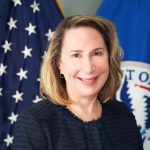 Samantha Medlock is President of Climate Risk Advisors, helping communities and organizations advance equity, sustainability, and resilience. Her career began chasing floods as a local official in Texas Flash Flood Alley—a hands-on experience that still shapes her approach to climate and disaster risk management.
Samantha Medlock is President of Climate Risk Advisors, helping communities and organizations advance equity, sustainability, and resilience. Her career began chasing floods as a local official in Texas Flash Flood Alley—a hands-on experience that still shapes her approach to climate and disaster risk management.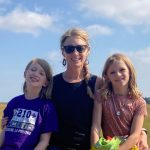
 Arsum is the Senior Adaptation and Coastal Resilience Specialist for the National Wildlife Federation’s Southcentral Region. In this role, she advances climate adaptation efforts, with a focus on nature-based approaches to address the impacts of climate change and extreme events across the Gulf region. She has authored and co-authored numerous publications on climate impact assessments and adaptation solutions. Additionally, she regularly participates in state-based coastal resilience and hazard mitigation planning across the Gulf, collaborating with regional and local stakeholders.
Arsum is the Senior Adaptation and Coastal Resilience Specialist for the National Wildlife Federation’s Southcentral Region. In this role, she advances climate adaptation efforts, with a focus on nature-based approaches to address the impacts of climate change and extreme events across the Gulf region. She has authored and co-authored numerous publications on climate impact assessments and adaptation solutions. Additionally, she regularly participates in state-based coastal resilience and hazard mitigation planning across the Gulf, collaborating with regional and local stakeholders.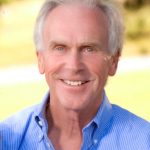 Frank is the former President of the Reinsurance Association of America. Frank currently serves on the Advisory Board of the OECD’s International Network for the Financial Management of Large-Scale Disasters, the RAND Center on Catastrophic Risk Management and Compensation, and the University of Cincinnati’s Carl H. Lindner III Center for Insurance and Risk Management Advisory Board.
Frank is the former President of the Reinsurance Association of America. Frank currently serves on the Advisory Board of the OECD’s International Network for the Financial Management of Large-Scale Disasters, the RAND Center on Catastrophic Risk Management and Compensation, and the University of Cincinnati’s Carl H. Lindner III Center for Insurance and Risk Management Advisory Board.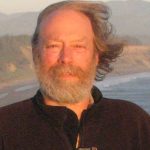 Jim is a multilingual world traveler. Based in Bavaria during the 1970s, Jim spent most of this period in India, Afghanistan and Nepal, where he founded and operated a charitable medical clinic serving Tibetan Refugees. He settled in Oregon in 1983 on a forested ranch in the Umpqua National Forest.
Jim is a multilingual world traveler. Based in Bavaria during the 1970s, Jim spent most of this period in India, Afghanistan and Nepal, where he founded and operated a charitable medical clinic serving Tibetan Refugees. He settled in Oregon in 1983 on a forested ranch in the Umpqua National Forest.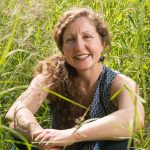 Dr. Micah Hahn is an Associate Professor of Environmental Health in the Institute for Circumpolar Health Studies at the University of Alaska-Anchorage. She received her joint PhD in Epidemiology / Environment and Resources from the University of Wisconsin-Madison and her MPH in Global Environmental Health from Emory University. Subsequently, she was a postdoctoral fellow for the CDC Climate and Health Program, and in this position worked collaboratively with the CDC Division of Vector-borne Diseases and the National Center for Atmospheric Research. Her research focuses on understanding the health impacts of climate change and working with communities to develop locally-relevant adaptation and resilience-building strategies. Dr. Hahn is also on the Management Team of the Alaska Climate Adaptation Science Center.
Dr. Micah Hahn is an Associate Professor of Environmental Health in the Institute for Circumpolar Health Studies at the University of Alaska-Anchorage. She received her joint PhD in Epidemiology / Environment and Resources from the University of Wisconsin-Madison and her MPH in Global Environmental Health from Emory University. Subsequently, she was a postdoctoral fellow for the CDC Climate and Health Program, and in this position worked collaboratively with the CDC Division of Vector-borne Diseases and the National Center for Atmospheric Research. Her research focuses on understanding the health impacts of climate change and working with communities to develop locally-relevant adaptation and resilience-building strategies. Dr. Hahn is also on the Management Team of the Alaska Climate Adaptation Science Center. Michael is a former Founding Principal of Resilient Cities Catalyst, a global non-profit helping cities and their partners tackle their toughest challenges. He is currently the Executive Director of Climate Resilience Academy at the University of Miami.
Michael is a former Founding Principal of Resilient Cities Catalyst, a global non-profit helping cities and their partners tackle their toughest challenges. He is currently the Executive Director of Climate Resilience Academy at the University of Miami.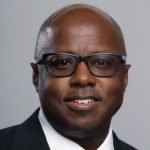 Dr. Quintus Jett is a consultant, educator, and strategist for public causes. He has a doctorate in Organizations & Management from Stanford University, and a two-decade faculty career which spans schools, departments, and programs of business, engineering, liberal studies, divinity, and public and nonprofit management. Following Hurricane Katrina in 2005, Dr. Jett launched a volunteer project in New Orleans, which enlisted residents, students from over a dozen colleges and universities, and hundreds of others to field map the city’s Gentilly district, Lower Ninth Ward, and New Orleans East. Dr. Jett is an innovator in higher education, bridging the divide between academic research and the other priorities of the modern university, including student access and diversity, community engagement, and providing foundations for life-long learning in today’s rapidly changing world.
Dr. Quintus Jett is a consultant, educator, and strategist for public causes. He has a doctorate in Organizations & Management from Stanford University, and a two-decade faculty career which spans schools, departments, and programs of business, engineering, liberal studies, divinity, and public and nonprofit management. Following Hurricane Katrina in 2005, Dr. Jett launched a volunteer project in New Orleans, which enlisted residents, students from over a dozen colleges and universities, and hundreds of others to field map the city’s Gentilly district, Lower Ninth Ward, and New Orleans East. Dr. Jett is an innovator in higher education, bridging the divide between academic research and the other priorities of the modern university, including student access and diversity, community engagement, and providing foundations for life-long learning in today’s rapidly changing world. Scott is Monfort Professor of Atmospheric Science at Colorado State University. He has written about 100 publications in the peer-reviewed climate literature, is a former editor of the Journal of Climate, and served for five years as founding Science Chair of the North American Carbon Program.
Scott is Monfort Professor of Atmospheric Science at Colorado State University. He has written about 100 publications in the peer-reviewed climate literature, is a former editor of the Journal of Climate, and served for five years as founding Science Chair of the North American Carbon Program. Linda has many years of experience in disaster preparedness and resilience. She has been an elected official on the Linn County Iowa Board of Supervisors, Chair of the Metropolitan Planning Organization, the East Central Iowa Council of Governments, the statewide Mental Health Developmental Disability and the Linn County Board of Health. Langston is a former president of the National Association of Counties (2013-2014).
Linda has many years of experience in disaster preparedness and resilience. She has been an elected official on the Linn County Iowa Board of Supervisors, Chair of the Metropolitan Planning Organization, the East Central Iowa Council of Governments, the statewide Mental Health Developmental Disability and the Linn County Board of Health. Langston is a former president of the National Association of Counties (2013-2014).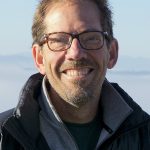 Ken works with families and organizations as a mediator, organizational consultant, trainer and facilitator. Along with his passion for helping people prepare for and reduce climate change, Ken also volunteers as a mediator through Mediation Works and is passionate about supporting youth through mentoring with Boys to Men of Southern Oregon.
Ken works with families and organizations as a mediator, organizational consultant, trainer and facilitator. Along with his passion for helping people prepare for and reduce climate change, Ken also volunteers as a mediator through Mediation Works and is passionate about supporting youth through mentoring with Boys to Men of Southern Oregon. Matthew is a retired high school teacher who was once honored as Oregon High School Social Studies Teacher of the Year. Before his teaching career he was in the restaurant business in Portland. He is also a lawyer who has been a member of the Oregon State Bar Association since 1980.
Matthew is a retired high school teacher who was once honored as Oregon High School Social Studies Teacher of the Year. Before his teaching career he was in the restaurant business in Portland. He is also a lawyer who has been a member of the Oregon State Bar Association since 1980. Andrea is the Resilience Policy Advisor for the North Carolina Office of Recovery and Resiliency. She works across state agencies and with local governments to increase the state’s resilience to the impacts of climate change.
Andrea is the Resilience Policy Advisor for the North Carolina Office of Recovery and Resiliency. She works across state agencies and with local governments to increase the state’s resilience to the impacts of climate change.